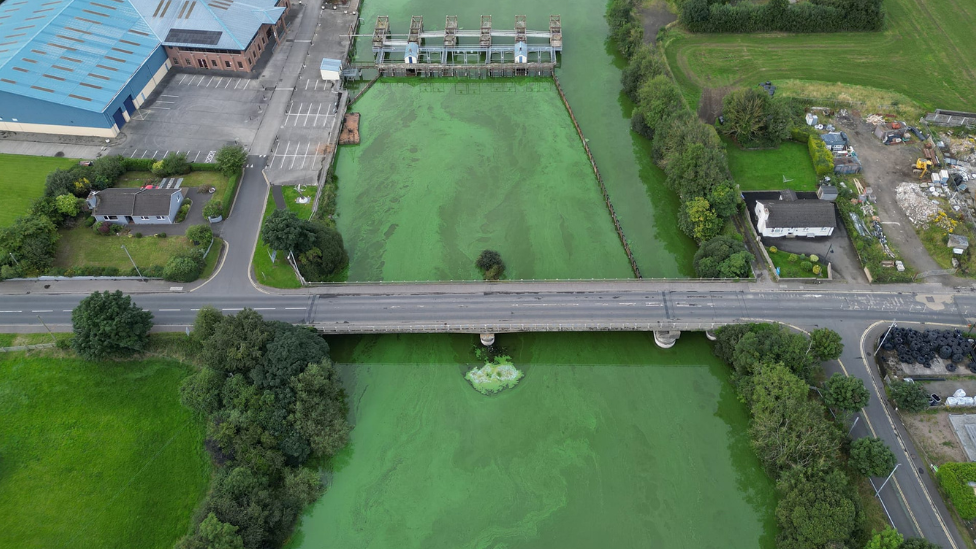Bathing ban at north coast beach over blue-green algae
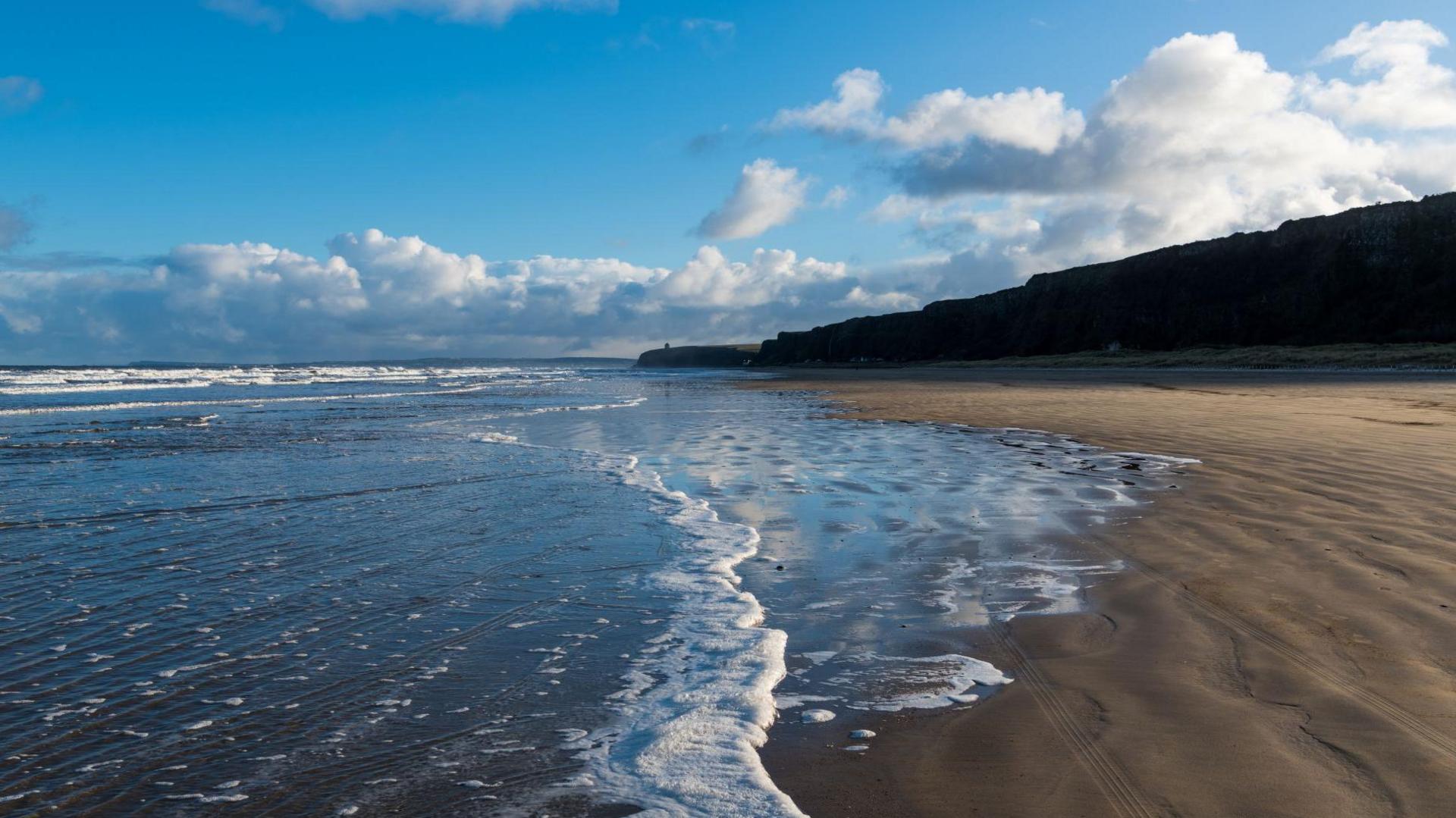
Toxic algae was found at Benone Strand on Thursday
- Published
A bathing ban is in place at a popular north coast beach over the August bank holiday weekend due to the presence of blue-green algae.
High levels of the potentially toxic algae was found at Benone Strand on Thursday.
No other beaches on the north coast are affected at this time, the Department of Agriculture, Environment and Rural Affairs (Daera) said.
It comes amid a number of reports of blue-green algae in loughs and waterways in Northern Ireland over the last few months, namely at Lough Neagh.
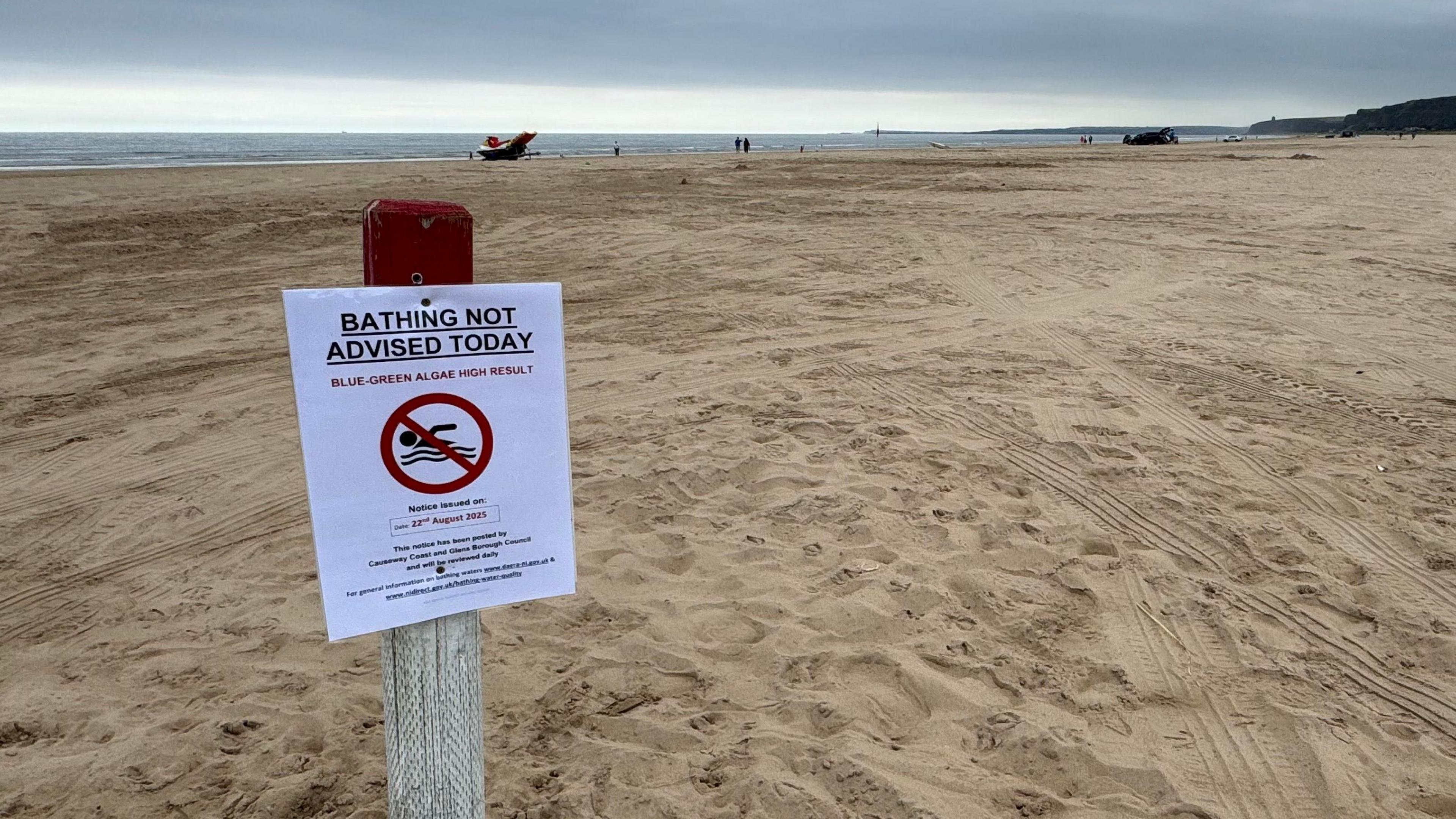
Signs warning against swimming have been erected along the beach
The algae has been detected more than 100 times across Northern Ireland since the start of the year, with the majority of sightings in Lough Neagh and the Lower Bann, as well as Lough Erne.
Earlier this week, Agriculture and Environment Minister Andrew Muir called for more support from his Stormont Executive colleagues to tackle the issues surrounding blue-green algae at Lough Neagh.
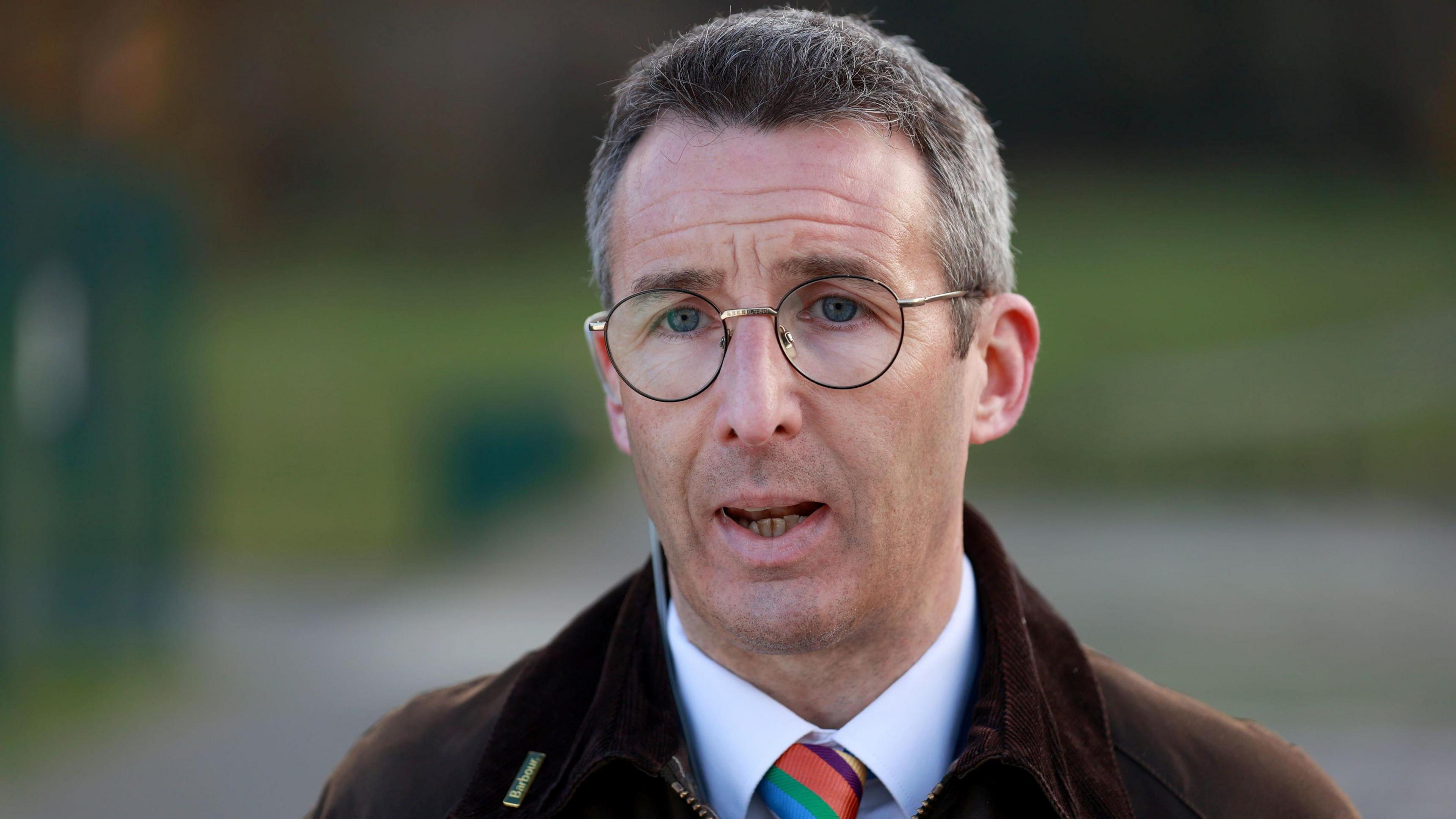
Andrew Muir said the situation at Benone is disappointing
On Friday, he said the ban was a "tough decision" but it is important that people observe the guidance for their own safety.
"It's really, really sad that this is occurring, particularly on a bank holiday weekend," he told BBC News NI.
"The people of Northern Ireland deserve better than bathing waters being closed and Lough Neagh being in this situation."
He added that he needs the backing of executive colleagues to sort the situation, with "important decisions to be made" in the coming months.
In a statement on Friday, Daera said blue-green algae was detected during a regular sample of bathing waters at the beach, where later analysis confirmed "high levels" of the bacteria in the water.
"The department has issued the bathing water operator, Causeway Coast and Glens Borough Council, an advice against bathing notification," it added.
"No other north coast beaches are affected at this time.
"The department will continue to monitor these beaches for blue-green algae and provide advice to bathing water operators when required."
Louise Cullen, BBC News NI agriculture and environment correspondent, at the scene
On Benone Strand, a dozen or more cars are parked, but children and dogs remain safely on the sand.
Some adults have entered the water, despite loudspeaker announcements from the RNLI lifeguard hut warning that a red flag is in place and swimming is prohibited.
Lough Neagh drains into the Lower Bann, which flows to the north coast, so it's no surprise that blue-green algae from upstream has reached the beach.
For those hoping for a last-hurrah summer swim on a sunny bank holiday weekend, however, it's a disappointing blow.
What is blue-green algae?
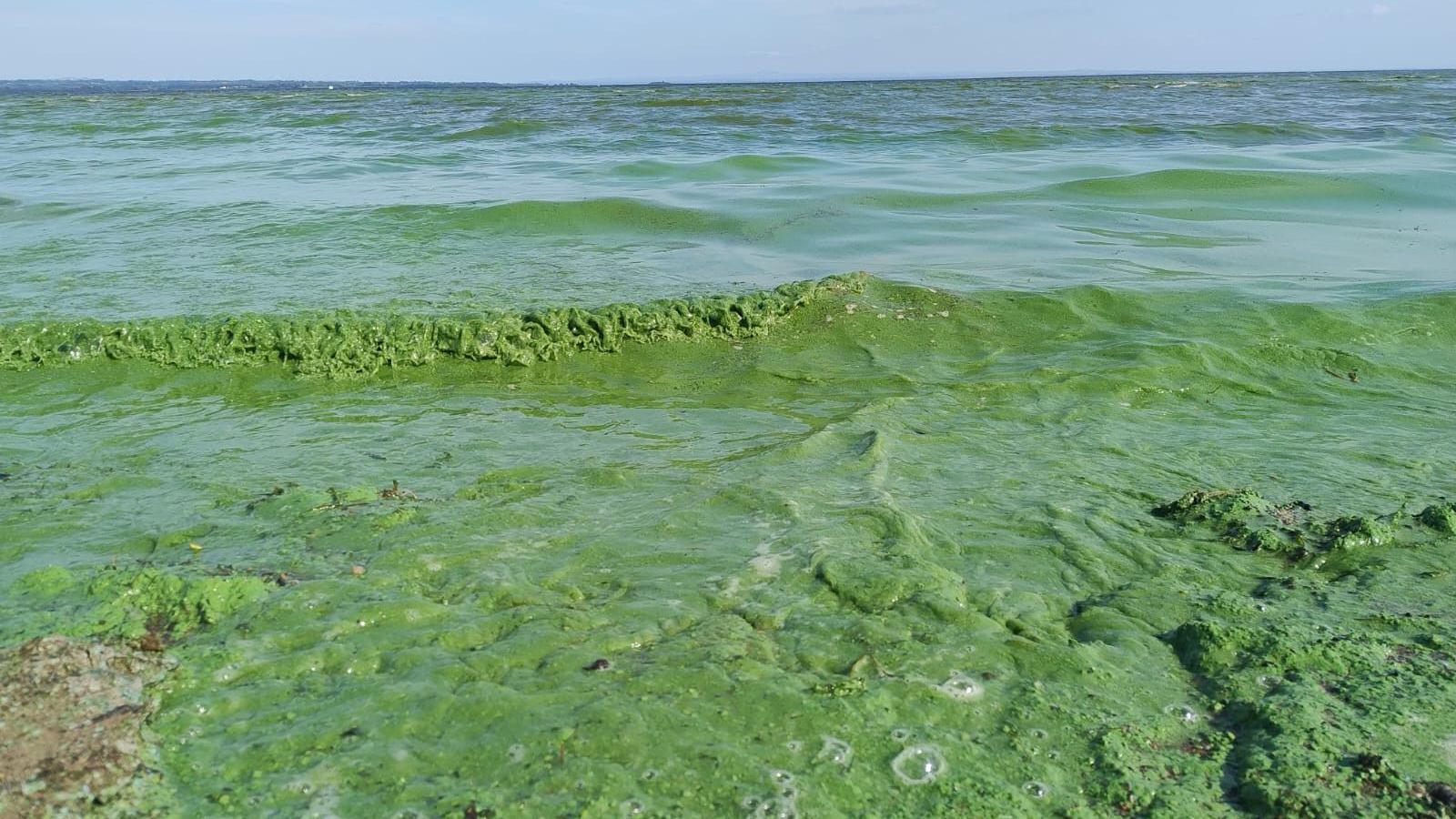
The large algae blooms have been an ongoing problem at Lough Neagh
Blue-green algae, technically known as cyanobacteria, is a collection of microscopic organisms that are naturally present in lakes and streams.
Under certain conditions, blue-green algae can become abundant in warm, shallow, undisturbed, nutrient-rich surface waters that receive a lot of sunlight.
When this occurs, blue-green algae can form blooms that discolour the water, or produce floating mats or scums on the water's surface.
It can spread rapidly, with blooms beginning to double every seven to 14 days.
While some blue-green algae can produce toxins, it is not possible to tell by sight alone. For pets, livestock and wildlife, the blooms can be extremely dangerous.
If people are exposed to high levels of blue-green algae, either through contact with water blooms, swallowing the water or inhaling airborne droplets, may cause health effects.
These can include diarrhoea, nausea or vomiting, skin, eye or throat irritation; and allergic reactions or breathing difficulties.
Read more here.
- Published20 August

- Published5 August 2024
